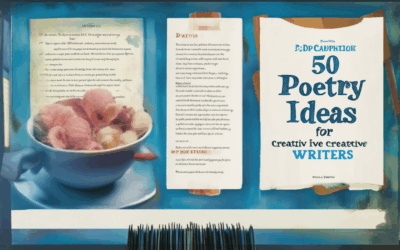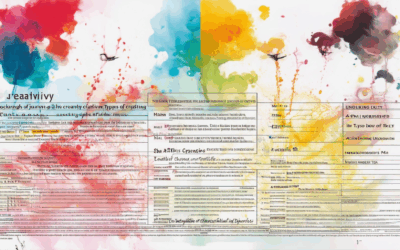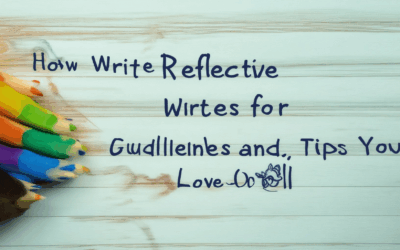Do you long to unlock your creativity and express yourself through verse? Whether you’re a complete novice or looking to refine your skills, this guide offers a wealth of poetry ideas for beginners that will inspire and empower you to write with confidence and ease. From discovering the simplest forms of poetry to exploring various structures and themes, we’ll walk you through the fundamentals of poetry writing. You’ll learn how to choose the right topics, overcome writer’s block, and craft poems that resonate with both your personal experiences and universal themes. By the end of this article, you’ll have a toolkit of poetry ideas and techniques that will transform your approach to writing. So why wait? Let’s dive in and discover the joy of poetry together!
Key Takeaways
- Craft a Memorable Opening: Use vivid imagery, thought-provoking questions, or bold metaphors to captivate readers.
- Engage with Sensory Language: Incorporate sights, sounds, tastes, and smells to paint vivid scenes.
- Experiment with Rhythm and Rhyme: Find your unique flow and play with traditional and free verse structures.
- Express Authentic Emotions: Write from your heart to connect deeply with your audience.
- Choose Inspired Themes: Select topics that resonate personally or align with your intended audience.
- Explore Poetic Forms: Try sonnets, haikus, or free verse to unlock new creative avenues.
- Learn from Masters: Study classic poems to enhance your writing style and techniques.
- Seek Feedback and Refine: Share your work with peers or writing groups for valuable insights.
- Practice Consistently: Regular writing strengthens creativity and builds confidence over time.

What Is An Easy Poem Topic?
Writing a poem can feel overwhelming, but finding the right topic can make the process much easier. Here are some simple and relatable ideas for poem topics:
- Everyday Moments: Write about something you experience daily, like morning routines, favorite foods, or small joys in life. Example: “The Sound of Morning Coffee.”
- Nature and Seasons: Describe the beauty of nature or the changing seasons. Example: “Autumn Leaves Dancing.”
- Emotions and Reflections: Explore feelings or memories that resonate with you. Example: “The Day I Realized…
- Animals and Their World: Choose an animal and describe its day-to-day life. Example: “A Day in the Life of a Cat.”
- Fantasy and Imagination: Create a story or scene that only exists in your mind. Example: “The Magic Forest.”
- Family and Memories: Write about cherished memories with family members. Example: “My Grandfather’s Stories.”
- Travel and Adventure: Imagine a journey or place you’d love to visit. Example: “Journey to the Unknown Island.”
- Food and Flavor: Celebrate your favorite dishes or cooking experiences. Example: “The Taste of Home.”
- Pets and Their Habits: Capture the unique traits of your pet. Example: “Buddy’s Daily Routine.”
- Celebrations and Festivals: Describe a special event or holiday. Example: “The Festival of Lights.”
- Music and Lyrics: Write a poem inspired by a song or musical piece. Example: “The Melody of My Heart.”
- Space and Universe: Explore the vastness of the universe. Example: “Starry Night Sky.”
- Time and Seasons: Reflect on the passage of time. Example: “Seasons of Change.”
- Children’s Adventures: Create a fun story for kids. Example: “Peter and the Dragon Quest.”
- Historical Figures: Write about someone interesting from history. Example: “The Life of Emily Dickinson.”
- Mythology and Legends: Retell or reimagine classic tales. Example: “The Legend of King Arthur.”
- Weather and Nature: Describe a weather phenomenon or natural scene. Example: “Stormy Weather Ahead.”
- Art and Creativity: Share your thoughts on art or creativity. Example: “The Art of Living.”
- Friendships and Bonds: Celebrate your closest friendships. Example: “Our Special Bond.”
- Technology and Innovation: Imagine future tech or reflect on past innovations. Example: “The Rise of Technology.”
- Philosophical Thoughts: Contemplate deeper questions. Example: “The Meaning of Life…”
- Personal Growth: Document your journey of learning or self-improvement. Example: “My Journey to Success.”
- Lost Loves and Nostalgia: Recall memories of past relationships. Example: “The One Who Got Away.”
- Future Hopes and Dreams: Envision your aspirations. Example: “My Dream World.”
- Challenges and Overcoming: Share your experiences with obstacles. Example: “Overcoming Fear and Doubt.”
- Gratitude and Kindness: Reflect on positive qualities in life. Example: “A World Full of Gratitude.”
- Peace and Serenity: Describe moments of calmness. Example: “The Peaceful Pond.”
Explore More Ideas on Silken Drum and find inspiration for your next poem!
What is the Easiest Poetry to Write?
The easiest poetry to write often relies on simplicity, structure, and accessibility. Here are some popular forms that are great for beginners:
- Acrostic Poems : These are straightforward poems where each line starts with a letter that spells out a word or phrase. For example:
This little flower A beautiful creation Blooms in spring's embrace
These forms provide a structured yet flexible approach to poetry, making it easier for anyone to start writing. Remember to read examples, experiment with different forms, and practice regularly to develop your style!
For more resources and inspiration, visit our Silken Drum platform to explore poetry tools and communities.

What Makes a Good Starting Line for a Poem?
A strong opening line for a poem sets the tone, engages the reader, and invites curiosity. Here are some key elements to consider:
- Imagery and Sensory Appeal : Begin with a vivid image or sensation that immediately draws the reader in. For example, “The scent of rain-soaked earth lingered in the air” paints a clear picture.
- Tone and Mood : The opening line should reflect the overall mood of the poem. A somber tone might start with “Shadows whispered secrets long buried,” while an uplifting tone could begin with “Dawn broke, casting golden light over the fields.”
- Pose a Question or Inquire : A well-crafted opening often poses a question or invites reflection. Lines like “Have you ever wondered the hidden meanings behind ordinary objects?” encourage engagement.
- Specificity Over Cliché : Avoid generic statements. Instead, use unique details. For instance, “On the 11th step, I paused to catch my breath” feels personal and specific.
- Balance Between Abstract and Concrete : Blend abstract concepts with concrete imagery. “Music played in the hollow spaces of my soul, a symphony of unanswered prayers” mixes emotion with a tangible metaphor.
- Emotional Connection : The opening should resonate emotionally. Lines like “My heart ached as I watched the sun dip below the horizon” immediately convey a deep feeling.
By focusing on these elements, you can craft an opening line that hooks the reader and seamlessly transitions into the poem’s themes.

How to Start a Catchy Poem
To craft a memorable opening line for your poem, consider the following strategies:
- Start with a Vivid Image:** Capture attention by painting a clear mental picture. For example, “Beneath the moonlit sky, whispers of the night carry secrets only shadows know.”
- Pose a Thought-Provoking Question:** Engage readers by presenting something intriguing. “What if the stars themselves sang? Would you hear their melody?”
- Use Bold Metaphors or Similes:** Compare the scene to something unexpected. “Time is a river, and we are its driftwood, carried wherever the currents may.
- Incorporate Sensory Language:** Appeal to sight, sound, touch, taste, or smell. “The garden smells of lavender, and the air hums with the promise of rain.”
- Begin with a Rhythm:** Make the first line musical, with a cadence that invites reading aloud. “In the quiet of the morning, before the world awakens, I find my thoughts,”
- Chose a Controversial Statement:** Challenge perceptions. “The universe doesn’t balance itself—it thrives on chaos.” This sparks curiosity and intrigue.
Remember, the goal is to hook the reader immediately while setting the tone for the rest of your poem. With a strong opening line, you’ve already begun a journey that invites exploration and emotion.
Ready to give it a try? Visit Silken Drum to share your creations and inspire others!
How to Write Your First Poem
Writing your first poem can be an exciting yet daunting experience. Here’s a guide to help you navigate the process with confidence:
- Start with a Theme or Emotion:** Choose a subject or emotion you’re passionate about. Whether it’s love, loss, nature, or adventure, let your personal connection guide your words.
- Experiment with Rhythm and Rhyme:** Pay attention to the sounds of words. Try matching syllables and rhymes to create a melody in your poem. Remember, there’s no right way to do it—just let the words flow naturally.
- Use Vivid Imagery:** Paint pictures in your reader’s mind with descriptive language. Imagine walking through a scene or feeling a strong emotion, then translate that into words.
- Consider Structure:** While there are many poem formats, like sonnets or haiku, you can also write in free verse. Start with a simple structure and gradually explore different forms.
- Write from Your Heart:** Don’t worry about perfection. Express your feelings honestly and let your unique voice shine through. Authenticity is key to a powerful poem.
- Read and Reflect:** Study great poems to learn from masterpieces. Analyze how they use language and structure to convey meaning. This will inspire your own writing and help you grow as a poet.
- Seek Feedback:** Share your poem with trusted friends or a writing group. Their insights can offer new perspectives and help refine your work.
- Persist and Practice:** Writing takes time to master. Keep experimenting, reading, and learning. Every poem is a step toward becoming a better writer.
Remember, there are no rules in poetry—only your imagination and passion matter. Happy writing! 🎨

How to Pick a Topic for a Poem
Choosing a topic for a poem can feel overwhelming, but it’s often the starting point that sets the foundation for your creative journey. Here’s a step-by-step guide to help you find the perfect theme:
1. Reflect on Personal Experiences
Your own life can be a rich source of inspiration. Think about moments that stood out to you—whether it was a happy memory, a challenging time, or an emotional experience. These moments can serve as a catalyst for your poem.
2. Explore Emotions and Themes
Consider what emotions or themes you want to convey. Are you feeling nostalgic, hopeful, or reflective? Identifying your feelings can help narrow down the subject matter. Common themes include love, loss, nature, identity, and adventure.
3. Use Imagery and Symbolism
Think about objects, places, or symbols that resonate with you. These elements can serve as metaphors or motifs in your poem. For example, a river might symbolize time or movement, while a tree could represent growth or stability.
4. Consider the Audience
Who will be reading your poem? Tailor your topic to suit their interests. If it’s for a friend who loves nature, you might choose a theme related to the outdoors. If it’s for a literary journal, consider more abstract or profound topics.
5. Experiment with Forms and Structures
Try different poetic forms like sonnets, haiku, or free verse. The structure can influence your topic selection. For instance, a sonnet typically focuses on a specific subject with a fixed rhyme scheme, which can guide your thematic choice.
6. Research Prompts and Ideas
Look for poetry prompts or writing exercises to spark your creativity. Websites like Silken Drum offer resources and inspiration to help you discover new topics. These prompts can act as a jumping-off point for your own unique ideas.
Conclusion
Picking a topic for a poem is a personal process, and there’s no right or wrong approach. Whether you’re inspired by your own life, nature, or something entirely imaginary, trust your intuition and let the words flow naturally. Happy writing!




0 Comments